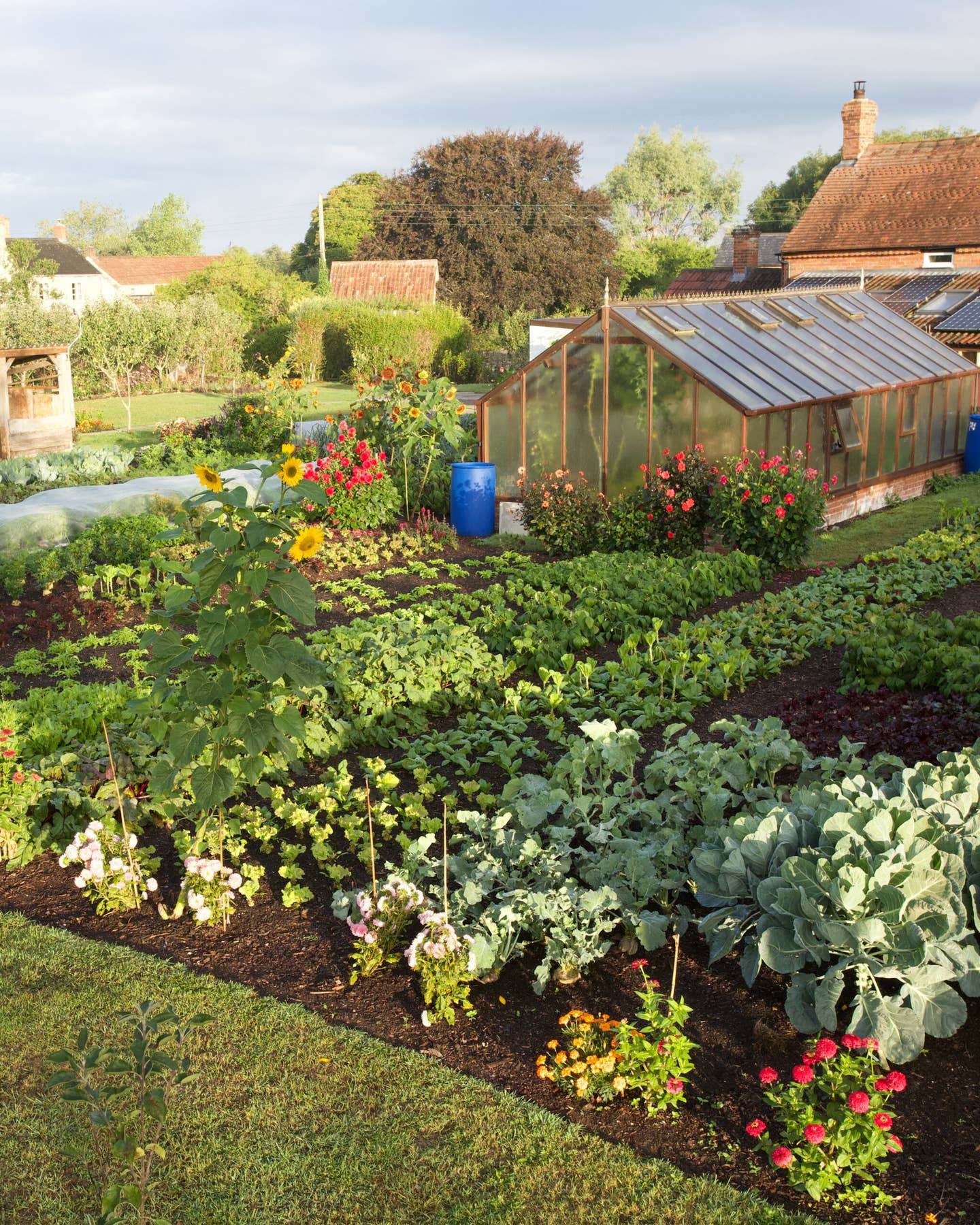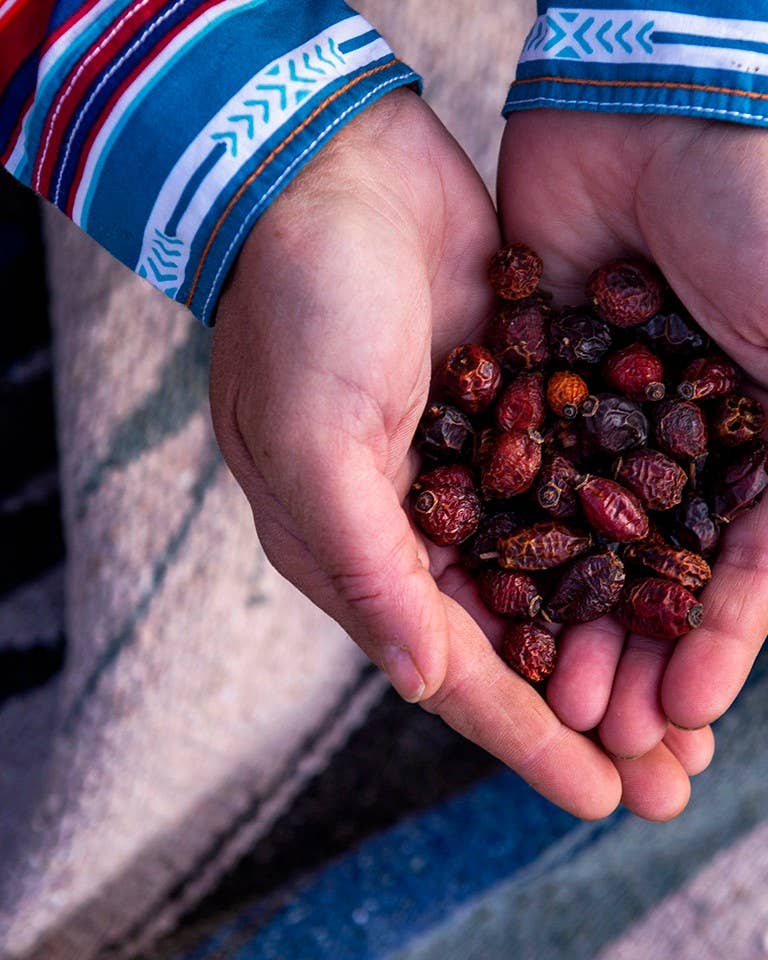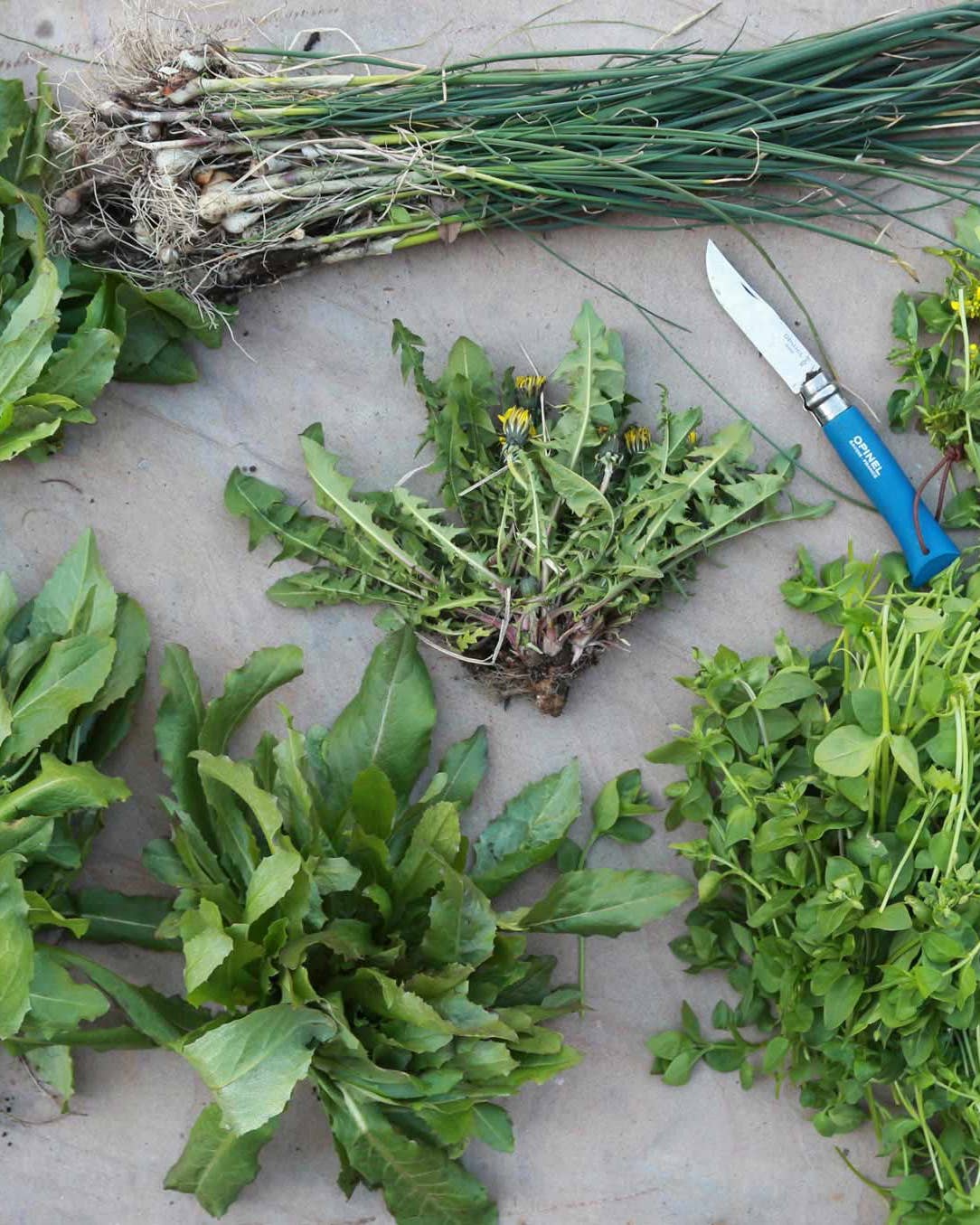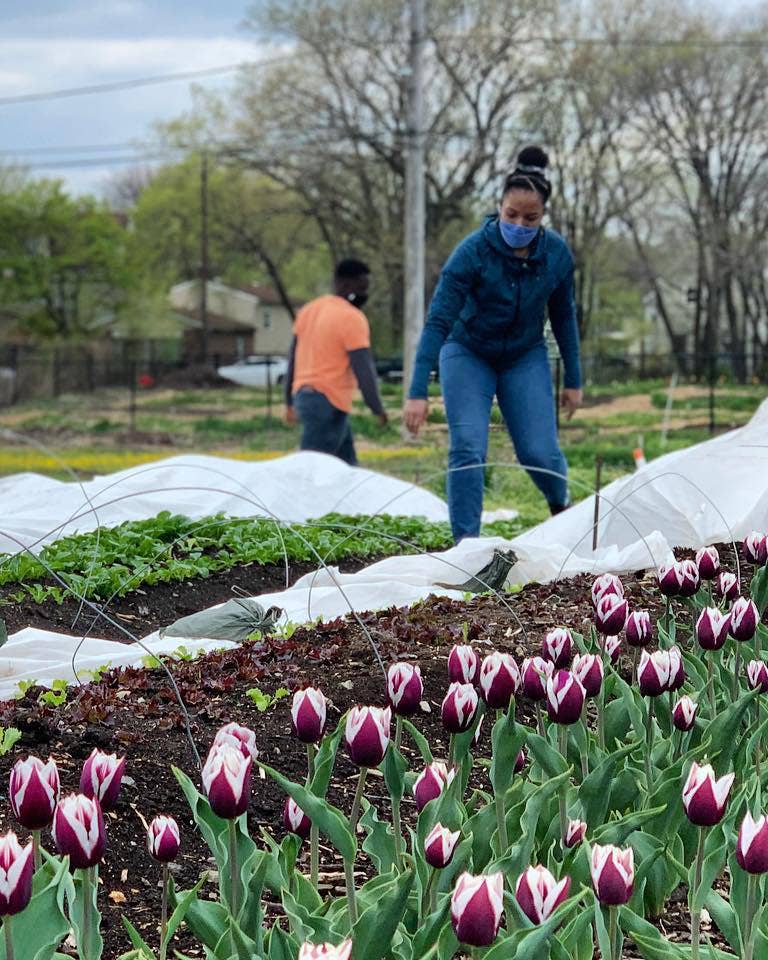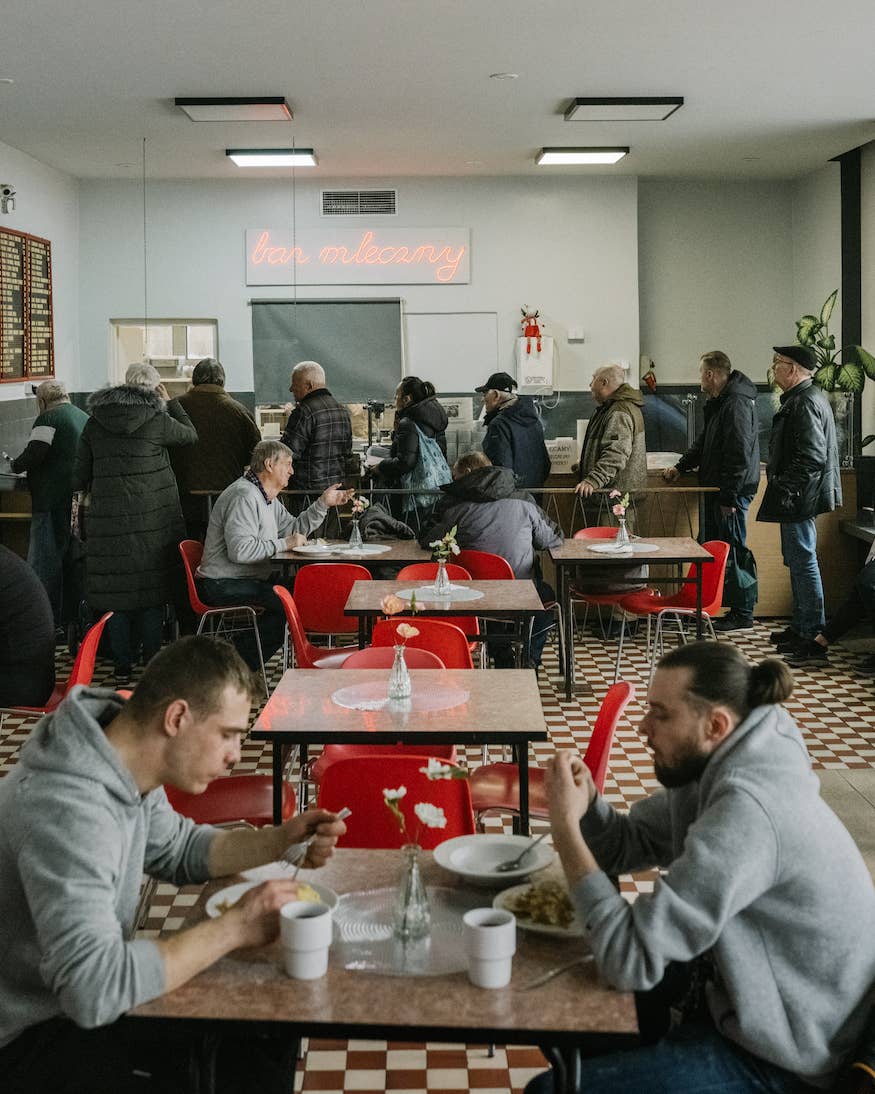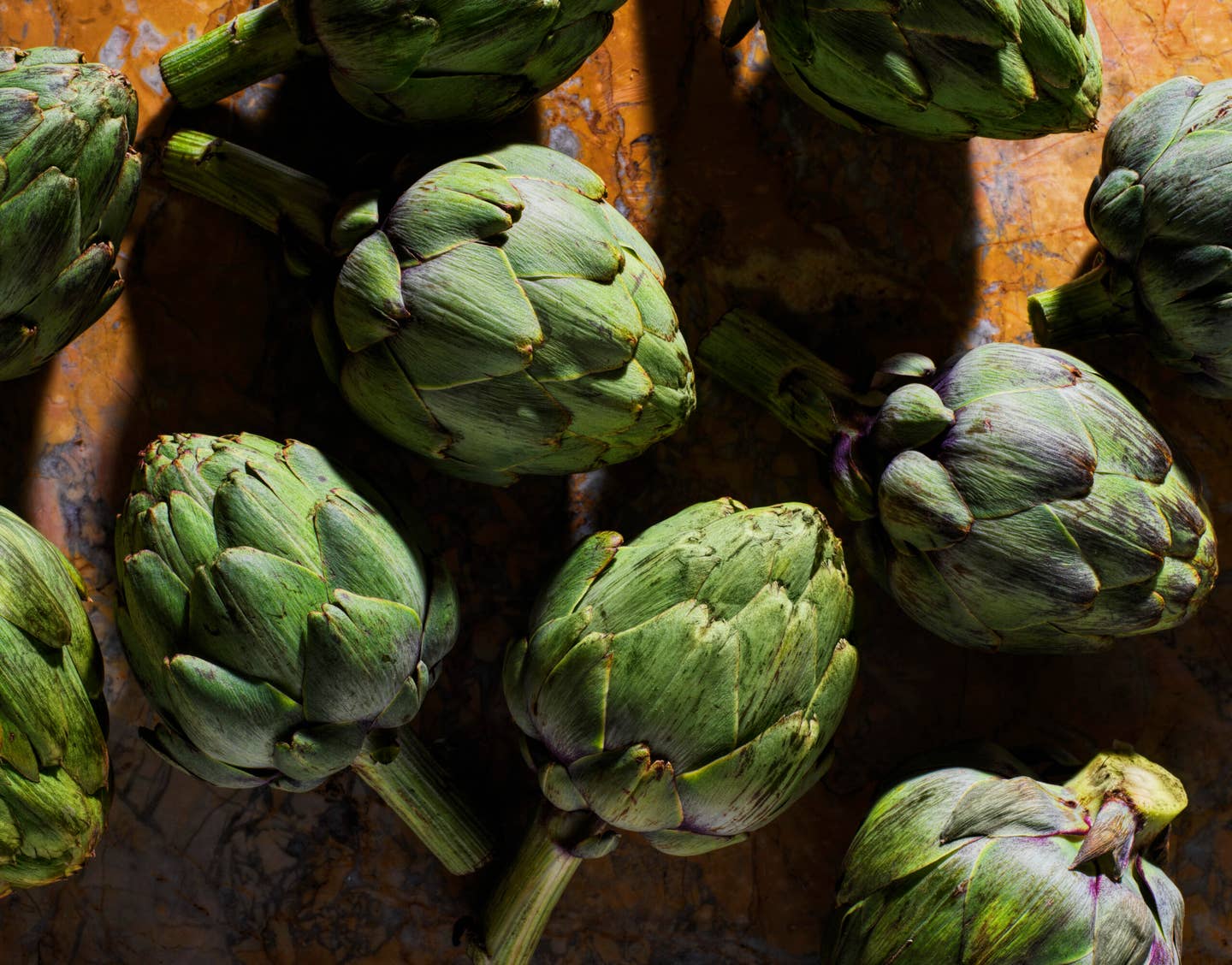Seeds Are the Epitome of Spring’s Unlimited Potential
Our new gardening columnist’s tips on sourcing heirloom varieties—and a cake that puts them front and center.
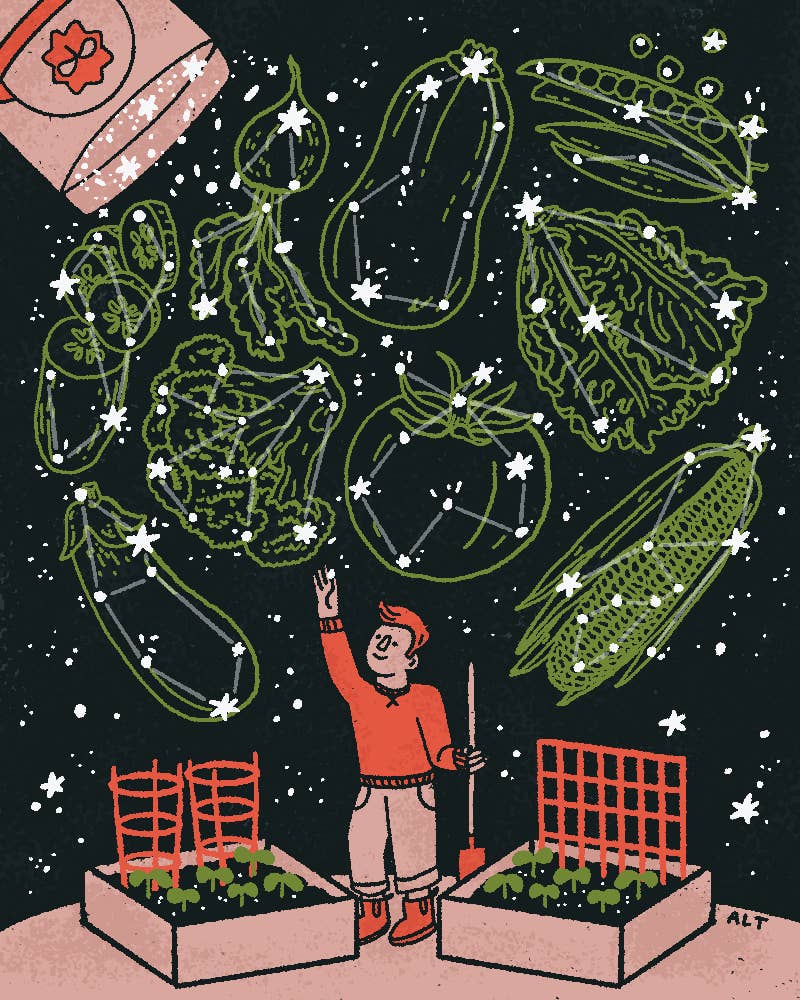
Plot to Plate is a SAVEUR column in which features editor Alex Testere exercises his green thumb, sharing practical gardening tips and seasonal produce-driven recipes from his patch of earth in New York’s Hudson Valley. He is also the author and illustrator of Please Grow: Lessons on Thriving for Plants (and People).
“How can something so small contain so much?” This is what I find myself muttering aloud while I sift through last year’s cache of seeds: the minuscule reproductive bits of various poppies, zinnias, sunflowers, and marigolds I’d grown the summer before. That fall, I collected the dried blooms—brittle husks of the delicate displays they once were—and crushed them between my fingers, allowing the tiny specks to scatter onto a plate. A constellation in miniature, each seed is a world all its own, containing the densely packed potential of an entire season’s worth of growth, if only some friendly gardener should take the time to plant it.
Maybe that’s giving the gardener too much credit, though. I’ve been planting seeds for long enough to know that some years they won’t grow quite how I expect them to, if they grow at all. I’ve marveled at the way that, despite my efforts to intervene, flowers like poppies prefer to take care of themselves—scattering their own seeds to the wind in the fall, settling lightly on the surface of the soil and enduring a necessary winter chill before germinating in the spring. Last year, for reasons I’m still trying to determine, all the tomato seedlings I started indoors turned yellow and died before I got to move them outside. But as it turned out, a couple yellow Sungolds that fell off the vine the summer before had deposited their seeds into the soil, a group of volunteers that came poking up around mid-May, eager, it seemed, to make their own way.
Seeds are bundles of pure potential, and springtime to me is imbued with that energy, this not-yet-realized vision of a flourishing future. Scribbling into my notebook, I plot out which beds I’d like to use for which produce, imagining how the squashes may weave beneath the corn stalks, how the peas climb their trellises (a mix this year of purple and green), or how the basil plants will form a protective pest-abatement barrier around the tomatoes, which will also make for an exceptionally easy sauce harvest. The leafy greens will thrive in clumps beneath the nitrogen-fixing peas, and along the back of the garden, where they won’t shade out any low-lying plants, the sunflowers will tower and sway and smile down at me, witness to it all. Sure, I might be in for a reality check in a few months’ time, but the romance of it all is an alluring distraction from the lingering chill in the air.
Another alluring distraction, I find, is cake. I wanted to come up with a way to enjoy the bounty and potential of garden seeds before it comes time to plant them, and my mind went straight to a seeded cake, not unlike a classic Victorian seed cake, traditionally baked around sowing season. My good friend Katy Beyer, head baker at Florence Pie Bar in Florence, Massachusetts, had the inspired idea to turn it into an upside-down cake, with a crunchy layer of seed-studded caramel at the bottom, flipped to become a sparkling topping. Perfumed with citrus zest and the aniselike pop of fennel seeds, sunflowers, pumpkins, and poppies—all seeds I love to plant in my garden—get their moment in the sun. And while you could technically make this cake with organically-sourced growing seeds, I recommend getting them instead from the spice aisle at your local grocery store.
Where I live, here in the Hudson Valley, seed-sowing season is officially kicking off. By the end of April there are still a few weeks until our official last frost date—just enough time to get a head start on indoor growth before transplanting outdoors. This year I’ve finally invested in some hanging grow lights, and outfitted an old wire shelf with them, creating what I hope is a reliable and consistent source of warmth and light for my seedlings. Lettuces, radishes, peas, and poppies (my favorite annuals that love to start with a cold snap) have already been sown outside, and are patiently awaiting their first warm mornings.
The sourcing, though, is half the fun of this transition period. I love to scour seed catalogs for the most eye-catching varieties—three-foot-long serpentine squashes, or white, warty pumpkins bigger than my head—and balance them with some old favorites, like crisp snap peas, or my enduring springtime favorite, French breakfast radishes. To help you get a head start on your own garden plotting, here is a selection of my favorite retailers of produce seeds, including some I’m looking forward to growing this year.
Maybe I’m biased based on where I live, but Hudson Valley Seed Company is the first place I turn each winter when I start thinking about planting the garden. The quality is top-notch, and every year they sponsor a series of artists to create original art for several of their seed packs, which come to feel like collectors’ items.
This year I’m growing: Glass Gem Corn, Green Tiger Tomato, Misato Rose Radish, Sweet Siberian Watermelon
A cooperatively owned business based in Maine, Fedco prioritizes transparency in the sourcing for all their seeds, as well as paying it forward. Fedco shares a portion of their proceeds on seeds of Wabanaki provenance (the Indigenous group native to the region) with a local cultural organization called Nibezun, and for seeds that originated in Africa (or are part of historically Black foodways), they share the proceeds with the Northeast Farmers of Color Land Trust, which helps farmers of color to purchase their own farms.
This year I’m growing: Painted Serpent Cucumber, Red Russian Siberian Kale, Benning’s Green Tint Patty Pan Squash
Cofounded by Blue Hill chef Dan Barber, it’s no surprise to find Row 7’s seeds place an emphasis on exceptional flavor. Whether it’s a purple snow pea that keeps its color after cooking, or a smaller, sweeter cousin to the butternut squash, these new produce varieties—organically developed in collaboration with breeders, chefs, and farmers—are destined to become the heirlooms of tomorrow.
This year I’m growing: Beauregarde Snow Pea, Sweet Garleek, Teagan Lettuce
Baker Creek has grown into a huge operation since they started in 1998, but they’ve retained their commitment to quality heirloom seeds—and they’ve got about 1,000 varieties. Pro tip: Sign up for their free seed catalog, which is one of the greatest pieces of mail you’ll receive all year.
This year I’m growing: Winter Squash Galeux D’Eysines, Miyama Turnips, Snow White Bok Choy, Pusa Jamuni Radish
Truelove carries an astonishing selection of heirloom varieties from around the world—including many from Southeast Asia and throughout the African diaspora—with a demonstrated commitment to food sovereignty and community farming. Fifty percent of each seed purchase goes back to the farmer who grew them, with farmers encouraged to grow and share varieties that express the story of their ancestry or community.
This year I’m growing: Intore (African Eggplant), Cossack Pineapple Ground Cherry, Indonesian Purple Long Beans, Taiwanese Sword Lettuce (Aa Choy)
Recipe
Keep Reading
Continue to Next Story
